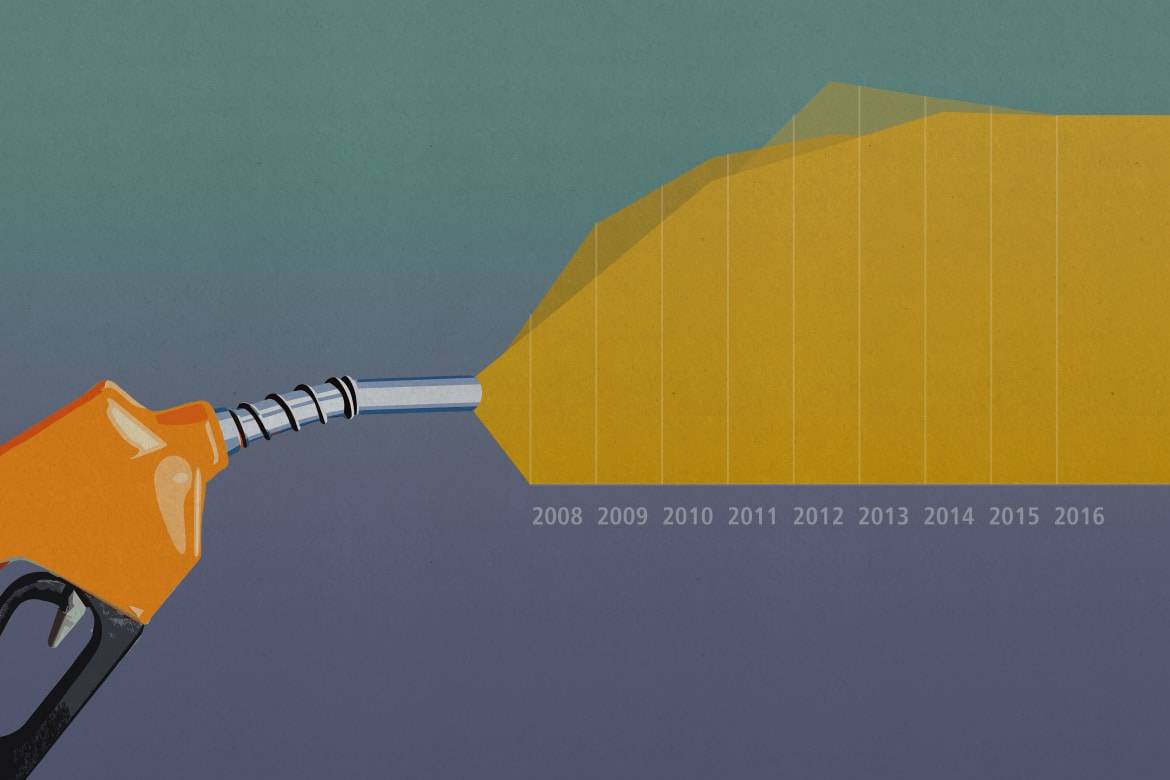New-Car Fuel Economy Down Second Year in a Row


CARS.COM — The year 2016 was a tough one for beloved pop-culture figures, the European Union and Democrats. It was also a bad year for sales of fuel-efficient cars. For the second year in a row, the so-called window-sticker fuel economy — the average EPA-estimated mpg of all new light-duty vehicles sold in the U.S. as opposed to real-world mileage — got worse. It’s only the second time the annual figure has declined since tracking began a decade ago.
Related: EPA Finalizes Mileage Standards Through 2025
According to University of Michigan researchers Michael Sivak and Brandon Schoettle, the annual average window-sticker fuel economy for calendar year 2016 was 25.2 mpg. That figure was down 0.1 mpg from 2015, and 0.2 from the all-time high of 25.4 mpg in 2014. Those declines may seem nominal, but it’s significant when you consider that it’s one of only two times that number has dipped.
While ups and downs occur from month to month, the annual figure since tracking began in October 2007 had never failed to improve by less than 0.4 mpg. In its two best years, fuel efficiency grew by 1.4 mpg, from 2011 and 2012, and 0.9 mpg the following year. Starting with the first full year’s average in 2008 of 20.9 mpg, fuel economy rose to a high of 25.4 mpg in 2014 before stagnating in 2015.
“The main reason for the lack of recent improvement in fuel economy is the relatively low price of gasoline and the consequent shift of the vehicle mix to proportionally more light trucks,” Sivak told Cars.com.
Indeed, in the past five years, pickup trucks and SUVs have gone from occupying roughly half of the top six annual best sellers in 2012 to the entire top six slots in 2016. In that time, auto sales themselves have grown, too, to nearly record levels. For example, annual sales of the perennial best-selling Ford F-Series pickup truck grew from 645,316 in 2012 to nearly 821,000 in 2016.
That surge in sales for less fuel-efficient vehicles was largely spurred by, at times, bargain-basement gas prices. Following a months-long decline in pump prices starting a couple of years ago, prices hit bottom in February 2016 at a thrifty national average of $1.70 a gallon. Even amid predictions that the average price of gas for calendar year 2017 will be $2.39 a gallon — 69 cents a gallon higher than last year’s low point — it continues to be a far cry from the nearly $4 a gallon motorists were paying on average five years ago.
Meanwhile, 2017 was starting off rather par for the course as the window-sticker value for January came in at 25.1, improved by 0.1 mpg from the previous month but identical to the January figure for both 2015 and 2016. Up until 2015, the monthly figure for January has never failed to improve.

Former Assistant Managing Editor-News Matt Schmitz is a veteran Chicago journalist indulging his curiosity for all things auto while helping to inform car shoppers.
Featured stories




